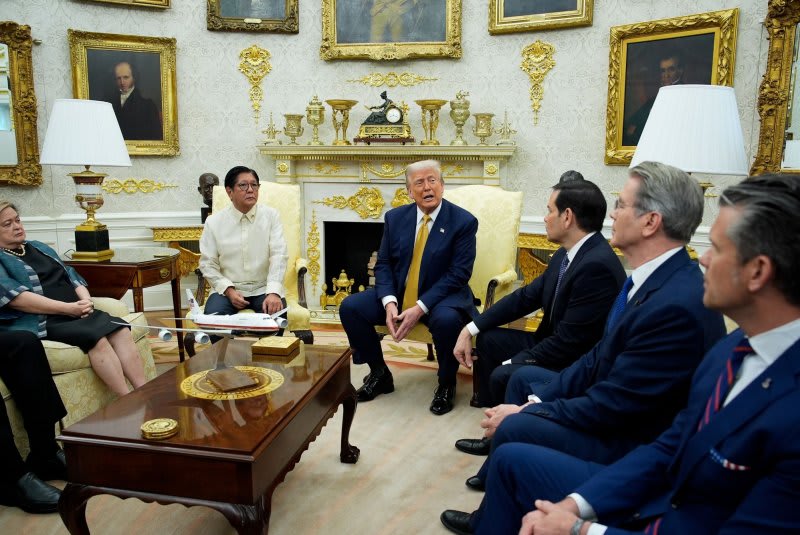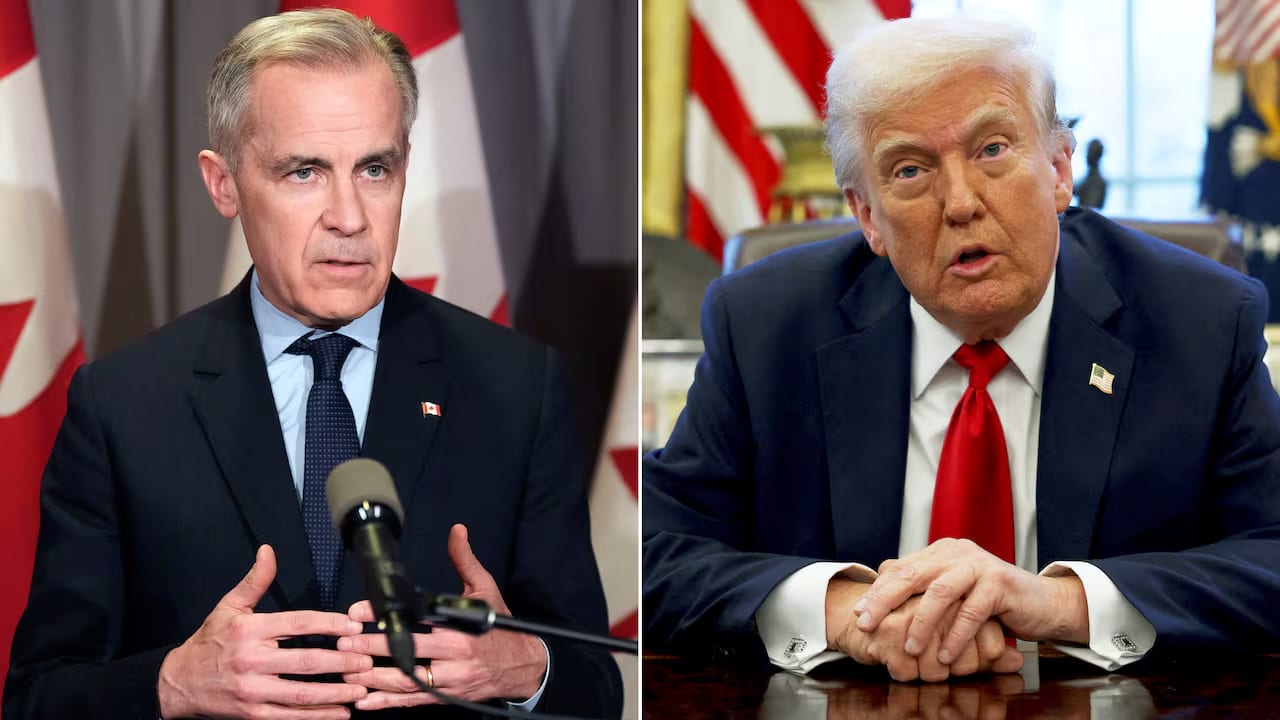It is not obvious what the responses should be. I am talking about responses to President Trump’s policymaking and his frequent and loud declarations. It is difficult because we don’t know what the political forces acting on him are and where his own head is at, on a particular issue. Unfortunately, shifts are frequent and from one moment to the next it is not clear what the future policy may need to be. Consistency is not his strong companion to this President. On an issue you might be responding to today’s immediate political forces; or you may not. You can see all this with how President Trump has dealt with Russia and Ukraine – Zelenskyy and Putin – over the last few months. Mind boggling. And it’s not over yet.
With all this confusion, I was drawn to think about current commentators and what they appear to recommend to respond to Trump’s inconsistency and dare I say it – his bullying. There are a variety of voices – political and expert, offering their views on the best way to manage Trump. One strong view is expressed by observer and commentator David Brooks – my Friday night companion on most Fridays at PBS, and his weekly commentary along with others. As he describes himself at the New York Times: “I’m an Opinion columnist at The New York Times.”. He is further described “as a “moderate Republican“, others have characterised him as centrist, moderate conservative, or conservative, based on his record as contributor to the PBS NewsHour, and as opinion columnist for The New York Times.” Bottom line, I suppose, is he may see himself as a Republican but he is no MAGA Republican that’s for sure.
Recently he provided a longform piece in The Atlantic titled: “America Needs a Mass Movement—Now”. He poses the question: how to react, and where required, oppose Trump and the ‘America First’ efforts:
“For the United States, the question of the decade is: Why hasn’t a resistance movement materialized here? The second Trump administration has flouted court decisions in a third of all rulings against it, according to The Washington Post. It operates as a national extortion racket, using federal power to control the inner workings of universities, law firms, and corporations. It has thoroughly politicized the Justice Department, launching a series of partisan investigations against its political foes. It has turned ICE into a massive paramilitary organization with apparently unconstrained powers. It has treated the Constitution with disdain, assaulted democratic norms and diminished democratic freedoms, and put military vehicles and soldiers on the streets of the capital. It embraces the optics of fascism, and flaunts its autocratic aspirations.”
Is this autocracy? Well apparently not according to David but:
“I am not one of those who believe that Donald Trump has already turned America into a dictatorship. Yet the crossing-over from freedom into authoritarianism may be marked not by a single dramatic event but by the slow corrosion of our ruling institutions—and that corrosion is well under way.”
“If you think Trumpism will simply end in three years, you are naive. Left unopposed, global populism of the sort Trumpism represents could dominate for a generation. This could be the rest of our lives, and our children’s, too.”
Geez that’s bad. But he goes on:
“By this past spring, Trump’s actions had become so egregious that I concluded that the time for a mass civic uprising had arrived. On April 17, I published a column in The New York Times arguing that all sectors of America needed to band together to create an interconnected resistance coalition.”
But it doesn’t appear that such a clarion call has raised much in the way of a civic response:
“But for the most part, a miasma of passivity seems to have swept over the anti-Trump ranks. Institution after institution cuts deals with the Trump-administration extortion racket. In private, business leaders will complain about the damage Trump is doing—but in public, they are lying low. University presidents were galvanized by Harvard’s initial decision to stand up for itself, but many other schools (including now possibly Harvard) have agreed to pay what are in effect compulsory bribes to the Trump administration.”
Not surprisingly, one reason for the passivity is ‘intimidation’ apparently. As David goes on to say:
“We all understand the first reason many people and institutions have remained quiet: intimidation. Leaders say, If I speak out, it will cost my organization millions. Acquiescence to the government begins to seem prudent. So instead of a mass movement, we have separate institutions each drawing up a self-preservation strategy. In the absence of a broad social movement to support and protect them, leaders all face the same collective-action problem: If I stand alone, I’ll be crushed. … All around me, I see civic leaders not saying what’s really on their mind. And over time, self-censorship can lead to internal spiritual and moral collapse.”
But a second reason for the lack of a wide civic response is described by David:
“But a second reason people are quiescent is that they don’t understand the fight we are in. They’re still thinking in conventional political terms. This crisis is not about election cycles. It’s about historical tides.”
So David sees the Trump political era in political and social waves:
“Since 2010 or so, the tide of global populism has risen, a movement that has brought us not just Trump, but Viktor Orbán, Narendra Modi, the revanchist version of Vladimir Putin, Xi Jinping, and Brexit. Drowning in this historic tide, conventional parties and politicians, whose time horizon doesn’t stretch past the next election, are hapless. Conventional politicians don’t have the vision or power to reverse a historical tide. Chuck Schumer is not going to save us.”
“Trumpism, like populism, is more than a set of policies—it’s a culture. Trump offers people a sense of belonging, an identity, status, self-respect, and a comprehensive political ethic. Populists are not trying to pass this or that law; they are altering the climate of the age. And Democrats think they can fight that by offering some tax credits?”
“To beat a social movement, you must build a counter social movement. And to do that, you need a different narrative about where we are and where we should be heading, a different set of values dictating what is admirable and what is disgraceful. If we fail to build such a movement, authoritarian strongmen around the globe will dominate indefinitely.”
Now, David doesn’t think that this ‘culture’ movement, the MAGA world will ultimately succeed. As he describes it:
“Americans will eventually reject MAGA, not only because it’s like a foreign implant in the body politic but also because over time, it will become clearer that Trump’s ethos doesn’t address the real problems plaguing his working-class supporters: poor health outcomes, poor educational outcomes, low levels of social capital, low levels of investment in their communities, and weak economic growth.”
Meanwhile, though, such a broad-based cultural force, as urged by David, doesn’t seem to me to warrant another such a cultural counterforce, assuming you could construct it, which doesn’t seem all that clear to me:
“To counter this, an anti-populist social movement must create a competing cascade of mini-dramas. Every day, the Trump administration’s statements and actions provide abundant material for such drama. In July, for instance, we learned that the administration was going to incinerate 500 tons of emergency food aid because the administration was too callous and incompetent to distribute it to starving people. An effective social movement would shove that story in everybody’s faces repeatedly.”
“Trumpism is ascendant now, but history shows that America cycles through a process of rupture and repair, suffering and reinvention. This process has a familiar sequence. Cultural and intellectual change comes first—a new vision. Social movements come second. Political change comes last.”
It is hard to orchestrate mini-darmas and I don’t see the organization for this. Instead, it seems to me, pointed small scale but collective opposition is where one can make progress. For example it might be useful for the University sector. I have been surprised by the lack of collaboration in this sector. The attack on Universities has been all too evident. The Editorial Board of the the FT has examined recently the Trump attack in an editorial titled, “Trump’s compact threatens to quash US academic freedom”
“The Maga movement’s campaign to remake the US’s institutional and social fabric intensified this month, when the White House issued a handful of universities — now extended to the whole sector — with a “compact for academic excellence”.”
“The compact, which people associated with the initiative describe as open to feedback from the universities themselves, prescribes a range of reforms from the Maga wish list, on the penalty of losing federal funding. The demands range from the micromanaged — such as requiring single-sex toilets and a price cap on tuition for US students — to the ideological, including “merit-based” admissions with no consideration for historically oppressed groups.”
What has been the effort? As the FT Board describes it:
“The compact, which people associated with the initiative describe as open to feedback from the universities themselves, prescribes a range of reforms from the Maga wish list, on the penalty of losing federal funding. The demands range from the micromanaged — such as requiring single-sex toilets and a price cap on tuition for US students — to the ideological, including “merit-based” admissions with no consideration for historically oppressed groups.”
And the results to date:
“Of the initial nine recipients of the proposal, two — the Massachusetts Institute of Technology and Brown University — have rejected it as an assault on free speech and enquiry. The most powerful universities, and those with the deepest pockets, should rally behind them. That would make it easier for the more exposed ones to do the same. With little sign of Trump letting up, however, they must steward their affairs tightly: prepare for funding cuts and address any problems that give the administration the pretexts it needs.”
But I concur with the FT Board. The attack should give rise to collective university efforts to face the Trump administration united both in rejecting the current Trump demands and to present a united front as to possible solutions. I am surprised by the failure to gather collaboratively by universities. I can only assume that such collective effort is uncommon and may take some effort among the university presidents to act together. We shall see.
Finally, another piece of the effort to oppose Trump but seek some degree of accommodation is displayed by Canada’s new Prime Minister Mark Carney. A very serious negotiation is at hand on trade and tariffs with Trump and Canada. Now, it could be retaliation time but notwithstanding the urging of some premiers notably Ontario’s Doug Ford, Carney has followed a very methodical difficult negotiation. As described by Tonda MacCharles, Ottawa Bureau Chief for the The Toronto Star and a senior reporter covering federal politics:
“Prime Minister Mark Carney has rejected Premier Doug Ford’s call to revive retaliatory counter-tariffs against the United States, citing sensitive negotiations with U.S. President Donald Trump aimed at securing tariff relief for the steel, aluminum and energy sectors.”
““There’s times to hit back and there’s times to talk, and right now is the time to talk,” Carney said Thursday.”
Moreover the view from the provinces differs and complicates matters even further for the federal Canadian Prime Minister:
“Alberta Premier Danielle Smith applauded Carney’s “very pragmatic approach” to the U.S. negotiations.”
“Carney reiterated Canada is in a relatively better position than any other U.S. trading partner when it comes to most tariffs. That’s due to Trump’s exemption from his 35-per-cent so-called “border emergency” tariffs for Canadian-produced goods that comply with North American or American content rules. Canadian energy and potash products that don’t comply with Canada-United States-Mexico Agreement (CUSMA) rules of origin face a lesser 10 per cent “border emergency” tariff.”
In the end Carney is hoping to conclude a reasonable set of trade measures but knows that in the longer term a diminution of Canadian dependence on the US is required. But that takes time and meanwhile US-Canada trade must be secured:
““Premier Ford and I are both interested in results for, in my case for workers and families across Canada, of course, in his case for the province of Ontario, and we’re looking to work to those ends as constructively as possible,” Carney said.”
“Canada learned tough lessons in the past year from the U.S. and China about “the danger of overdependence on single trade partners,” and must now address trade relations with both those partners with eyes open to the potential impact of trade actions on each relationship, he said.”
‘Wild responses’ may feel good for a short time but can’t achieve longer term results.
Image Credit: UPI and CBC News




